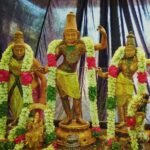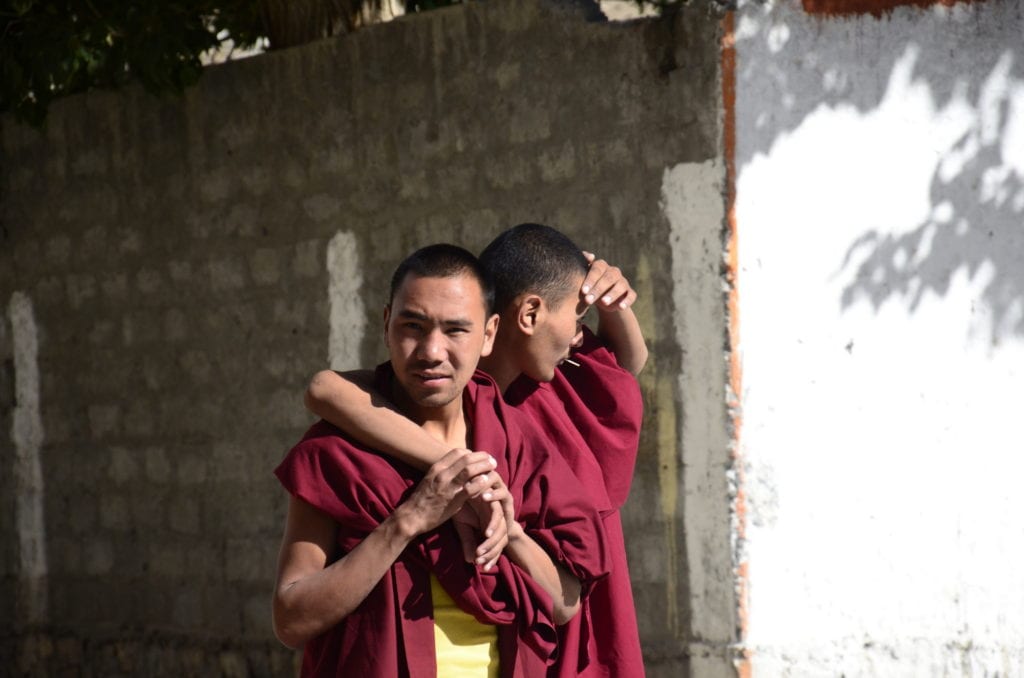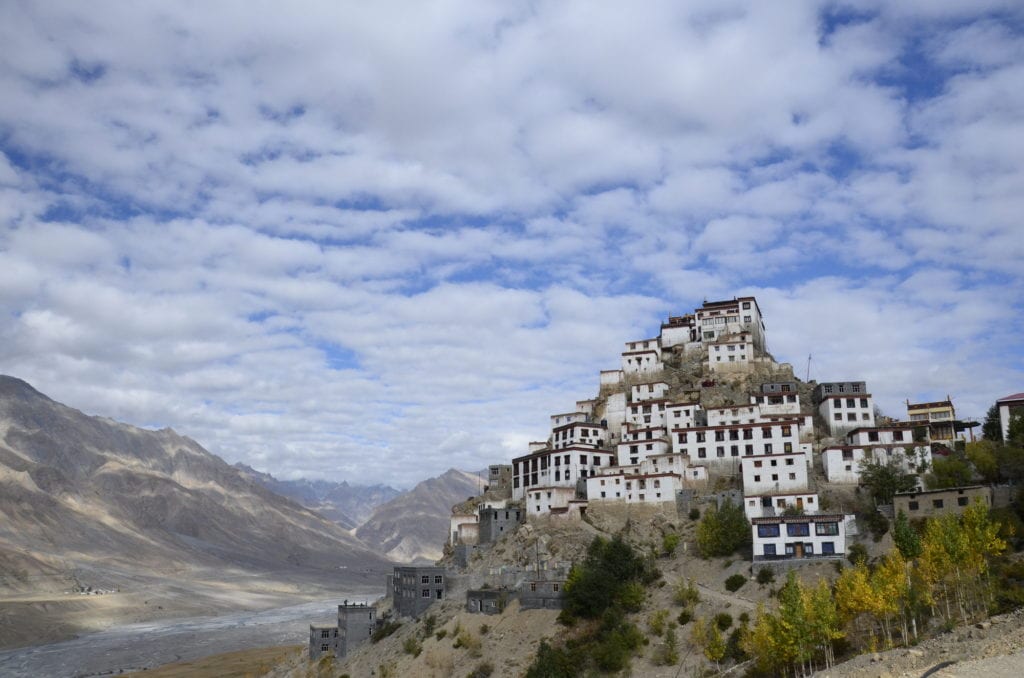Samatva
Byte Sized Travel Stories
people, places and stories.
nothing else.
just the trivial things.......
that make travel interesting....
and memorable
- All (75)
- Footsteps of Rama (3)
- Himachal (16)
- Quiz (0)
- Temples (16)
Bhog Naivedya
Refresher
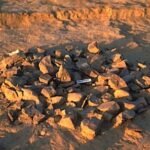
Naivedya 2
Temples of Andhra
Manoj Gundanna 1
TempleFlashCard
Naivedya 1
Lesson 20
Deity Theft
SandeepJi Lessons
Lesson 16
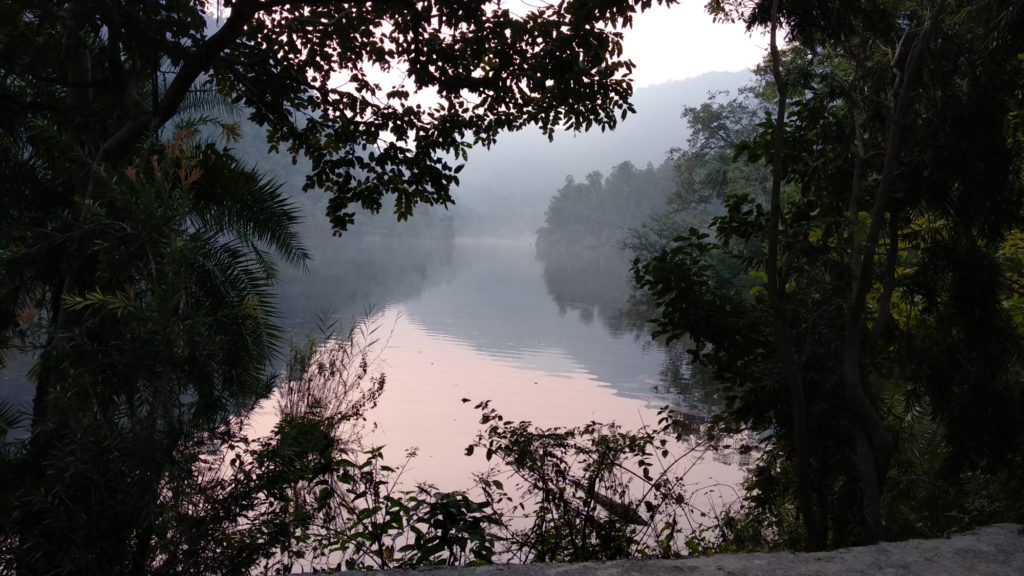
Lake placid at Renukaji
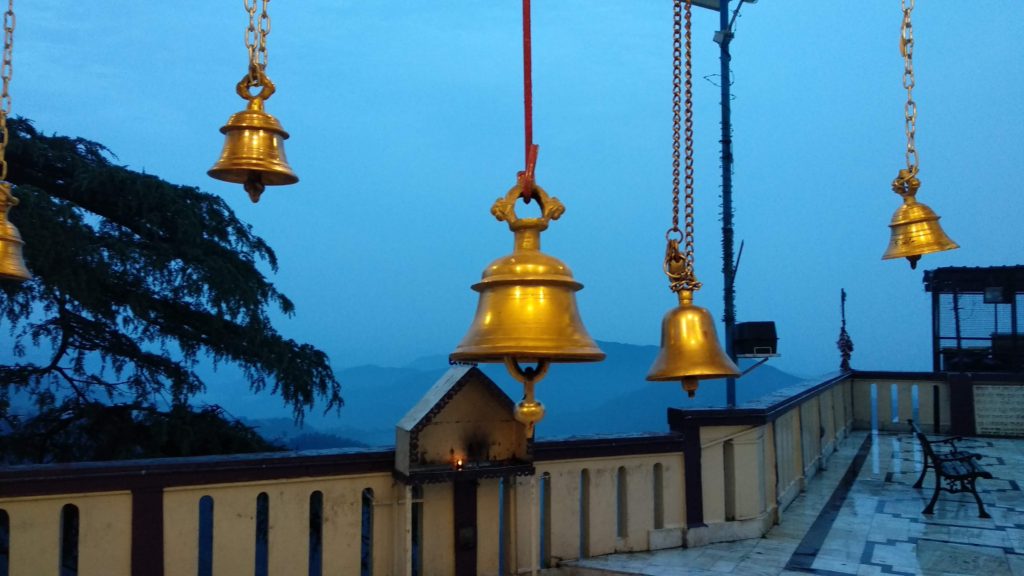
Everyday life at Kali Bhari, Shimla
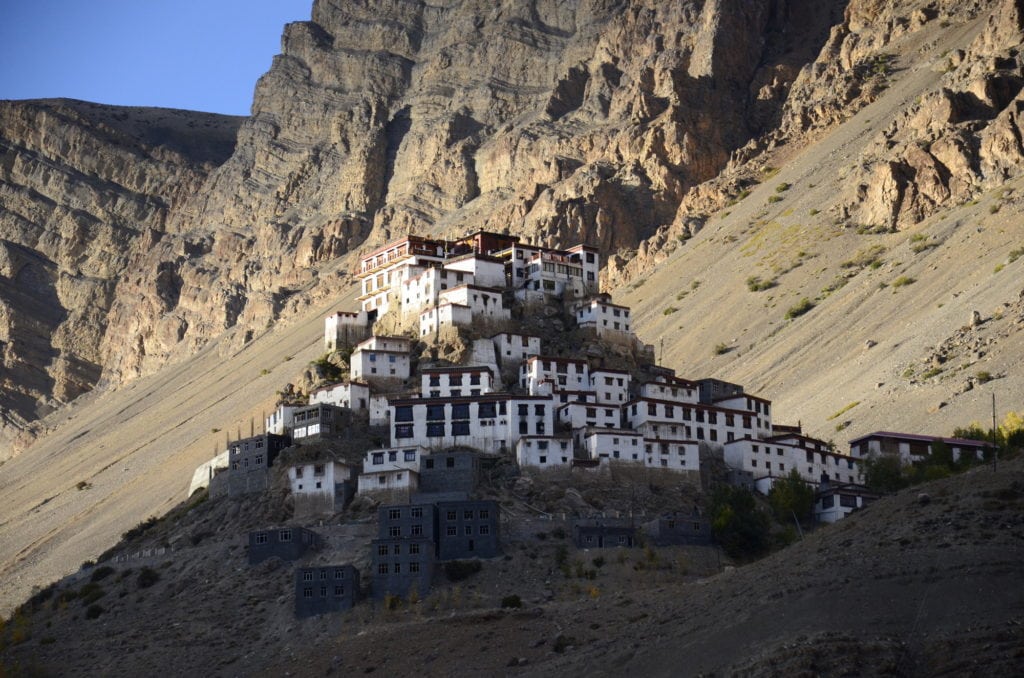
The pleasure of doing nothing at Ki
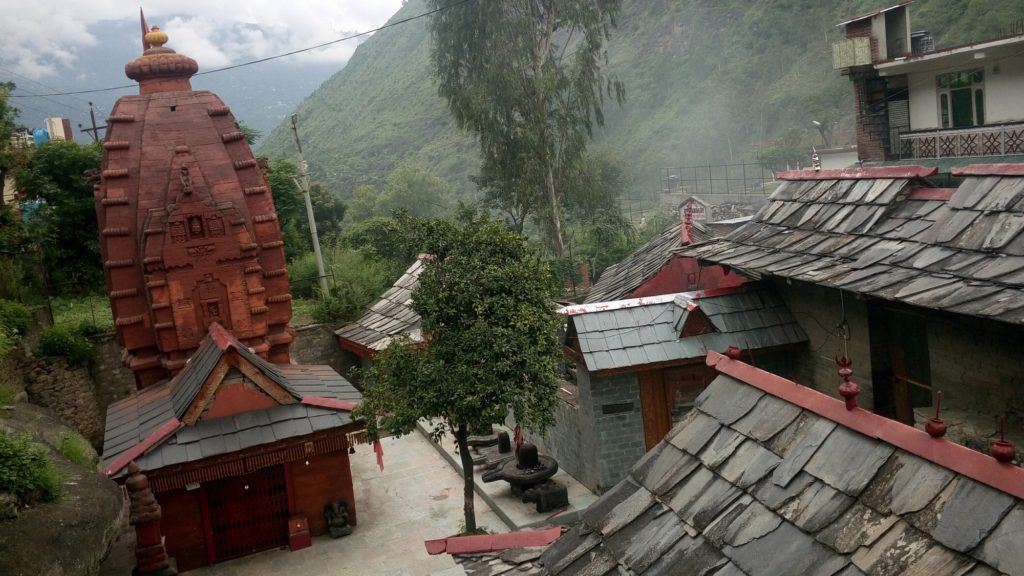
Sun Temple of Sutlej Valley, Nirath
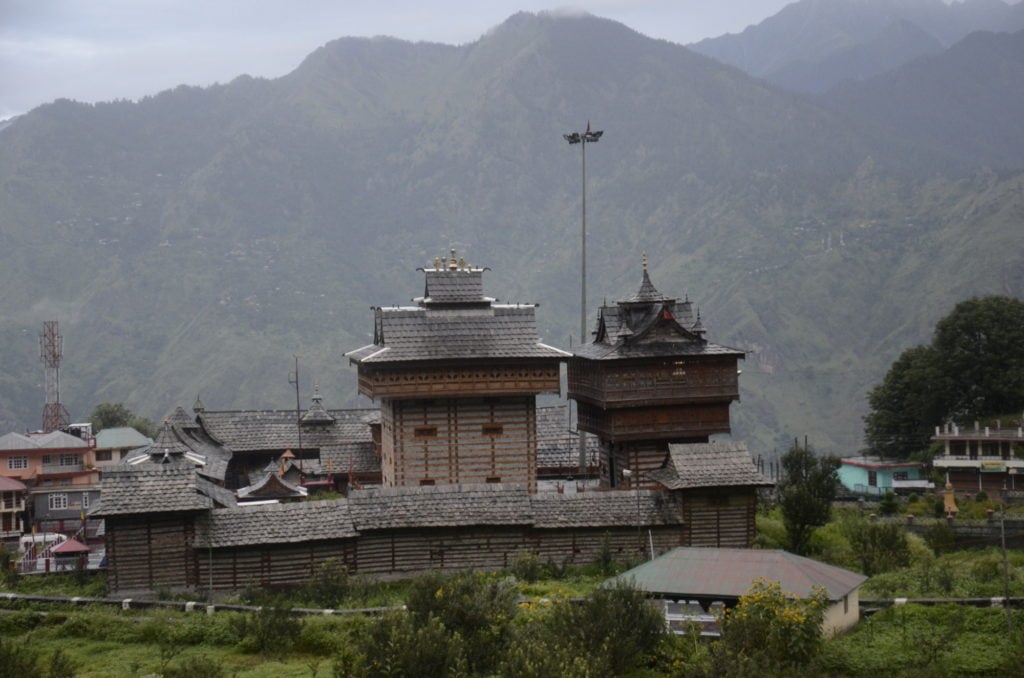
One of her kind, Bhimkali at Sarahan
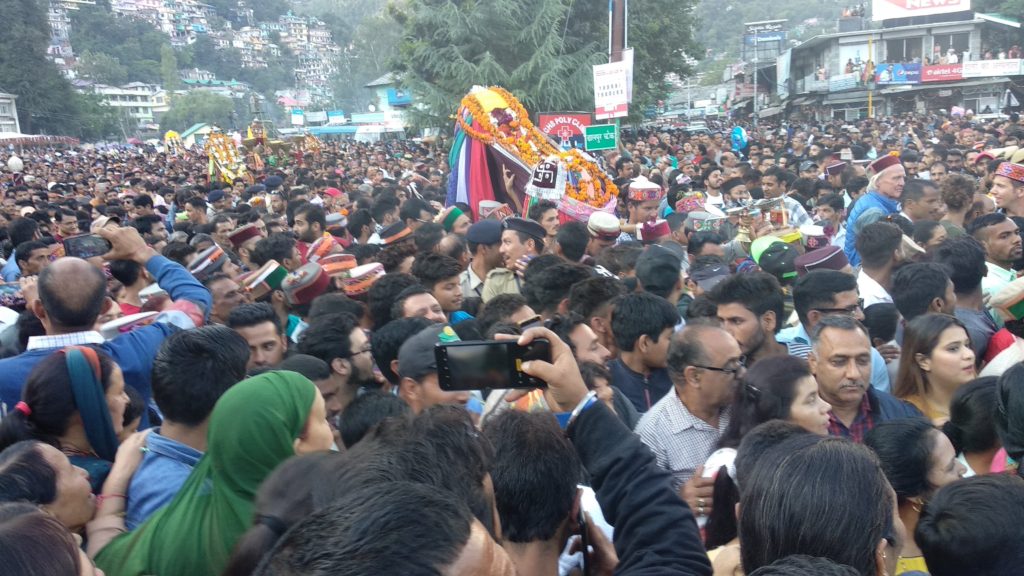
When the whole town is a temple, Kullu Dussehrah
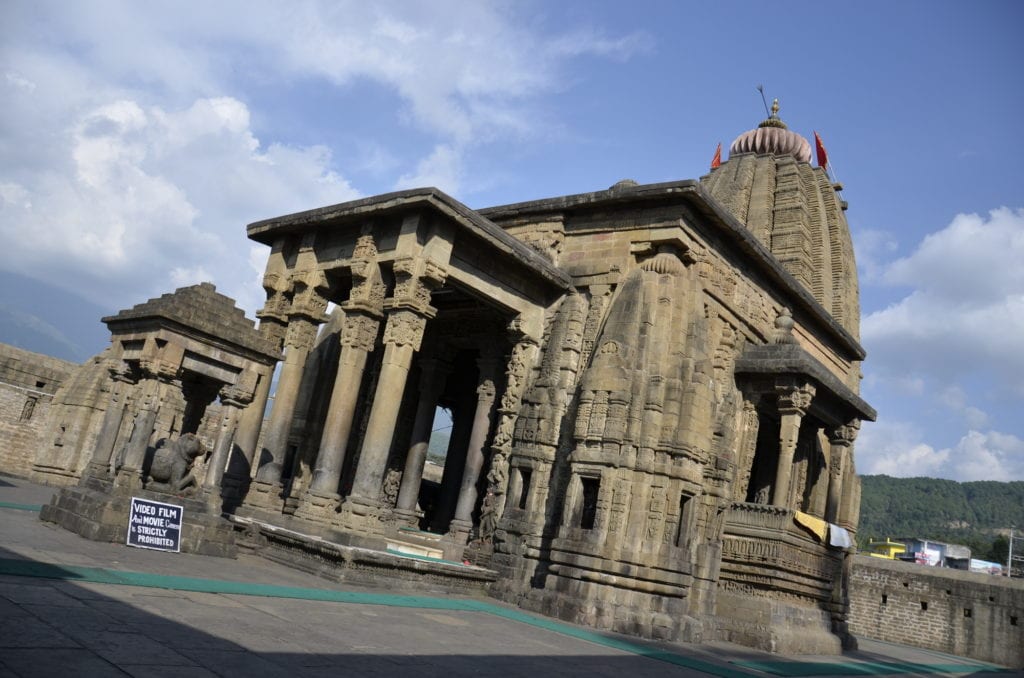
Perfect setting for the soul. Baijnath
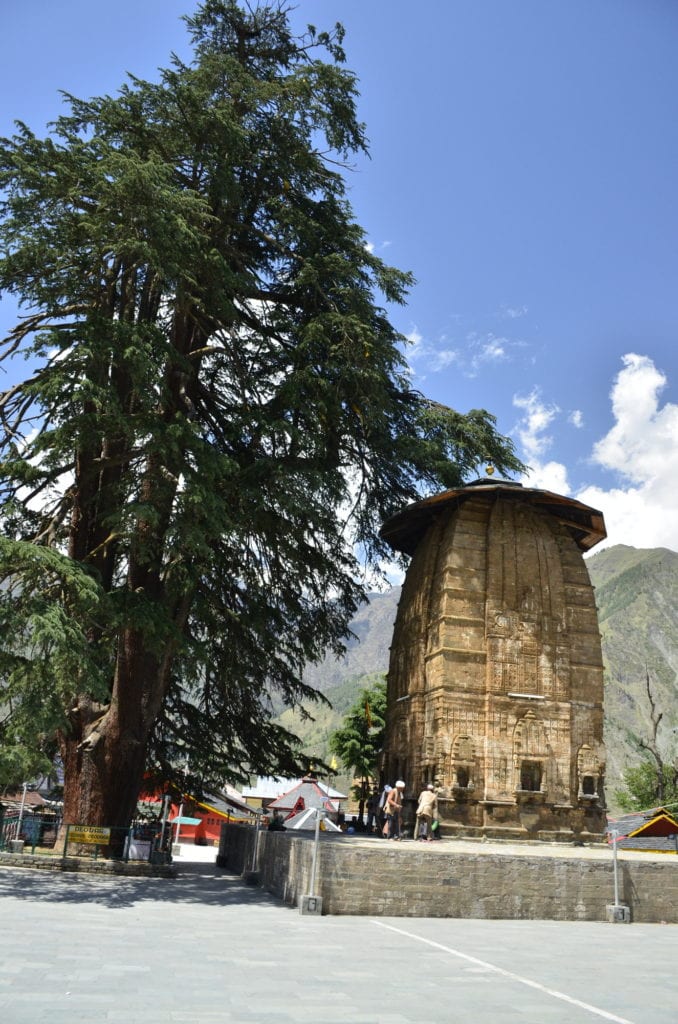
Land’s end at Bharmour
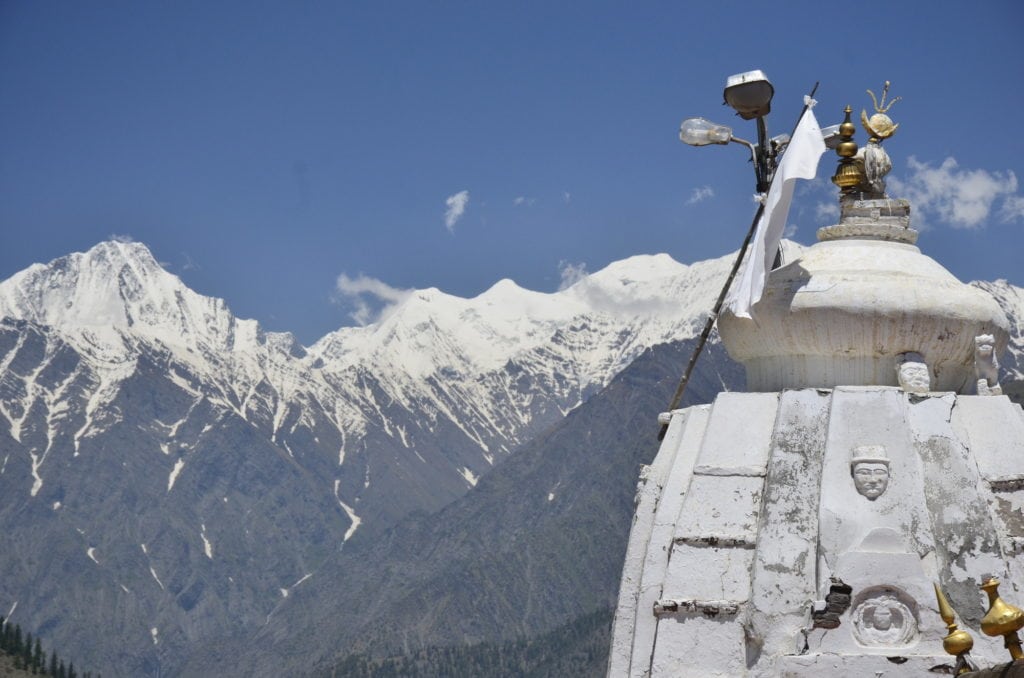
Harmony lived each day, Triloknath
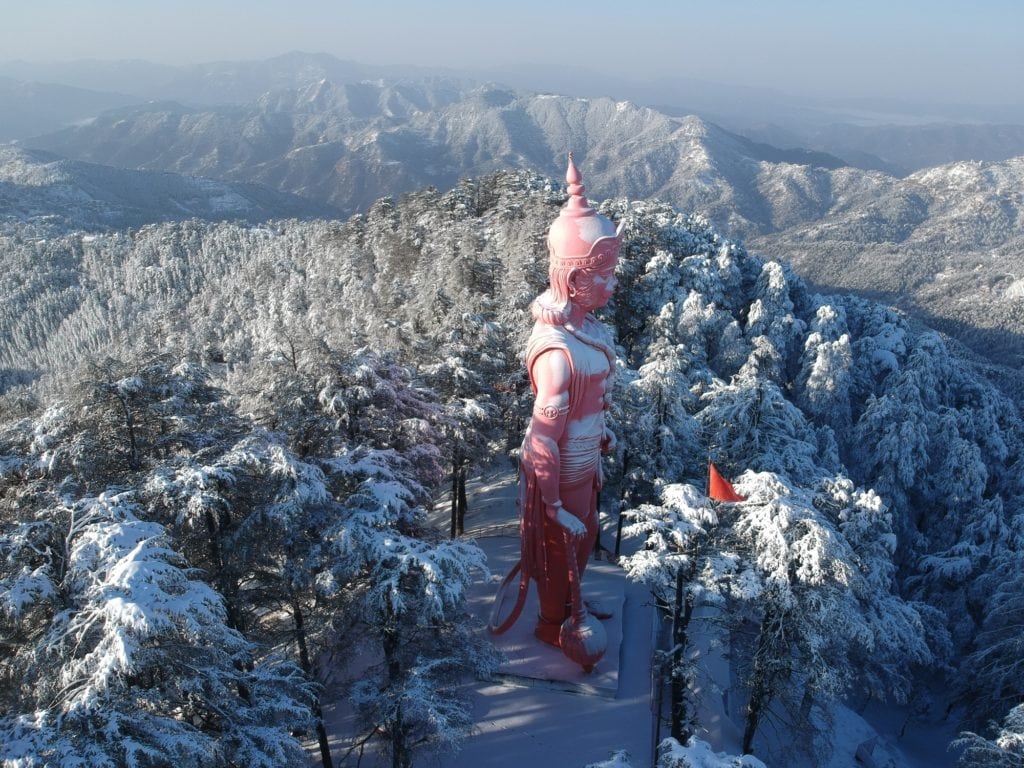
Hanumanji at hilltop, Shimla
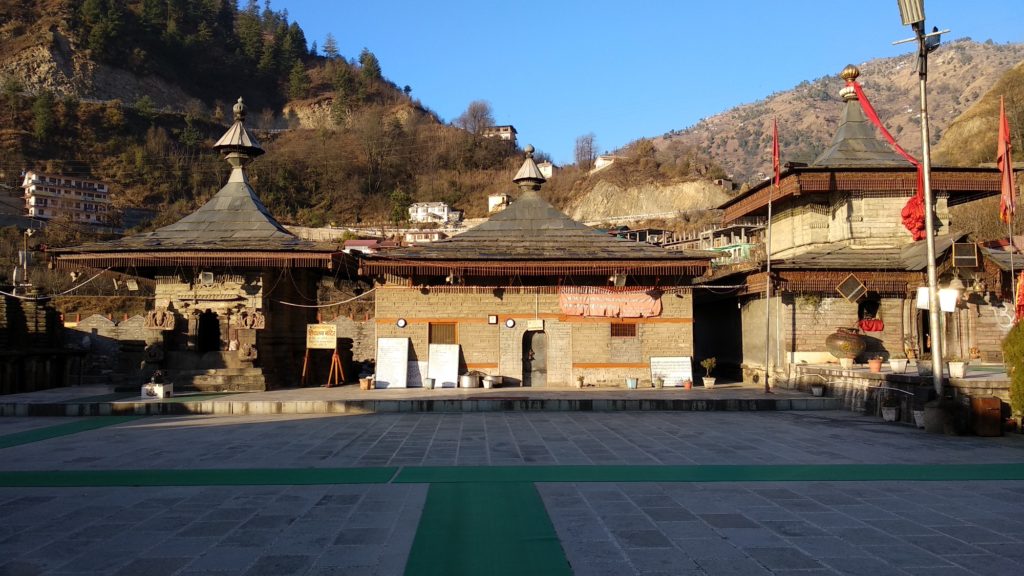
Hatkoti, on its own
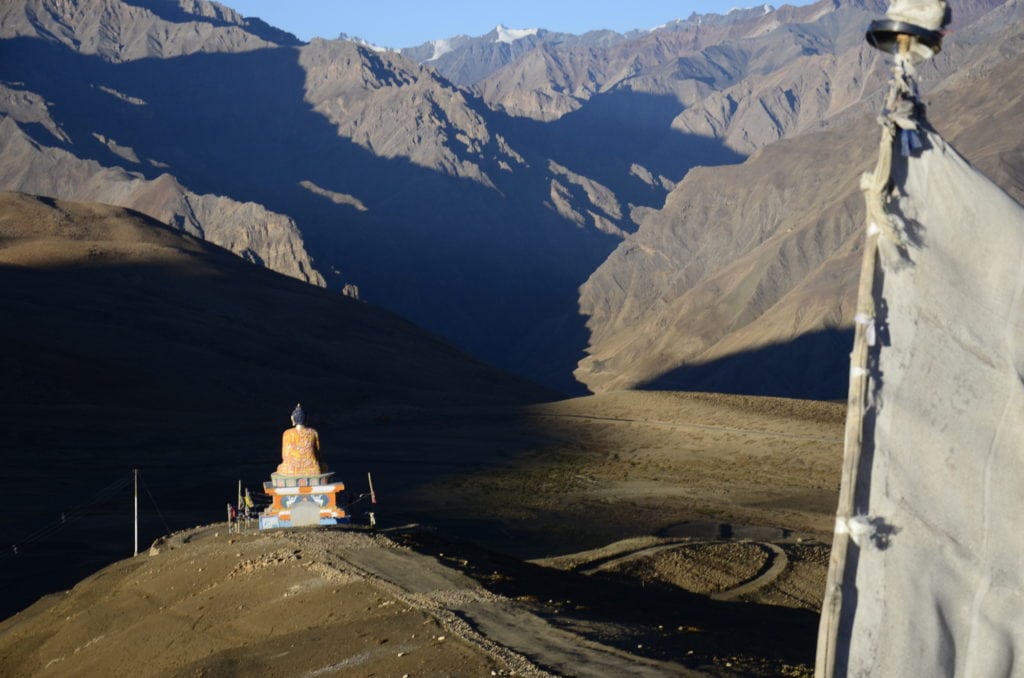
The perspective of Buddha, Langza
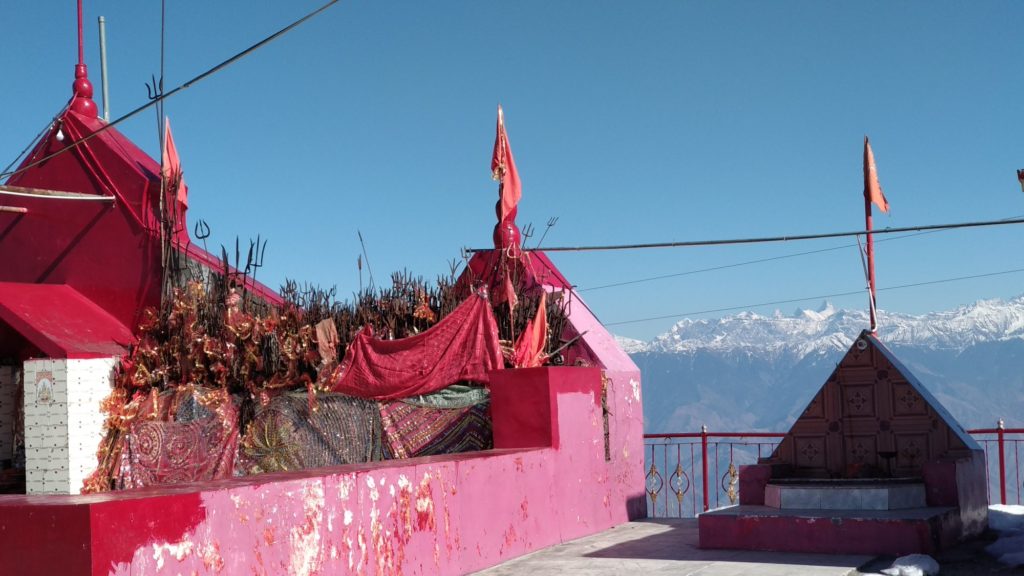
Mataji, Mountains and Maggi, Dainkund
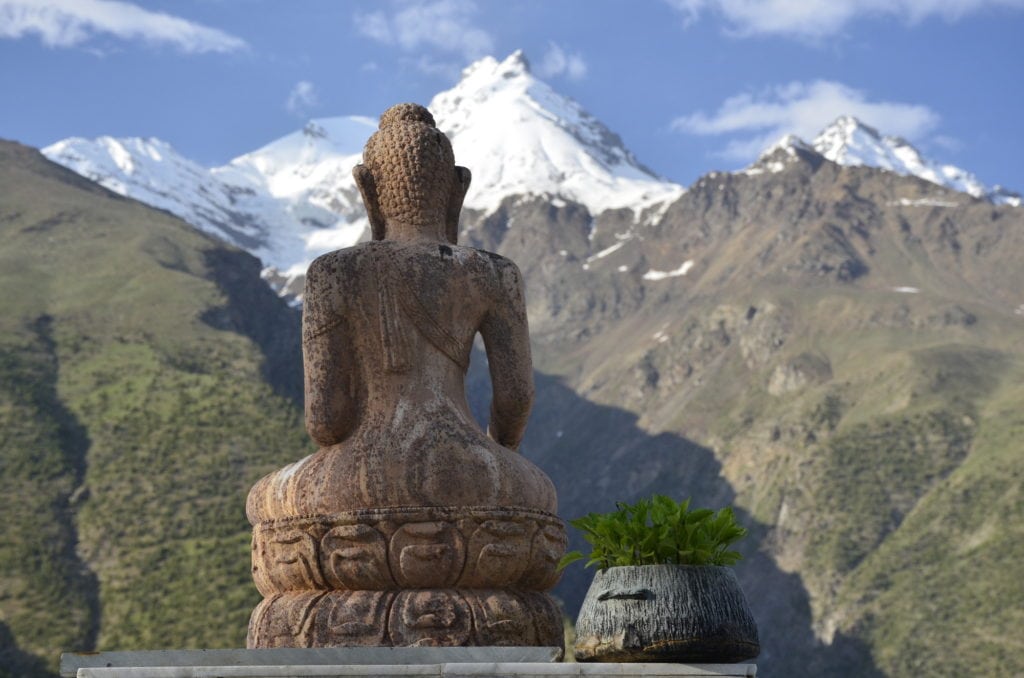
Philosophy at a glance, Kardang
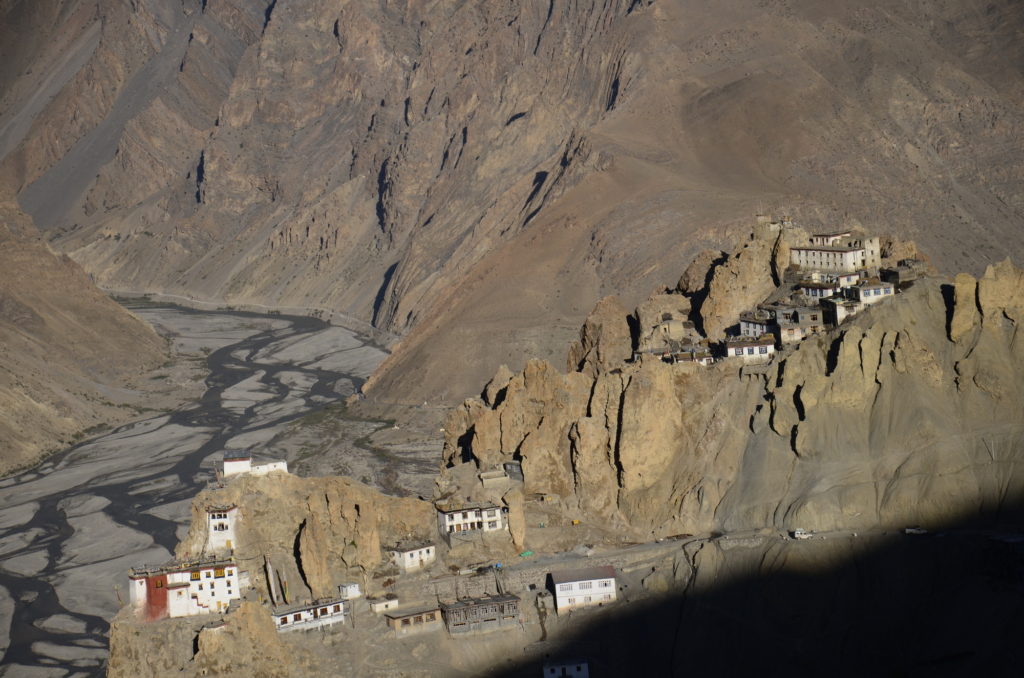
Coming out of Mud, Dhankar
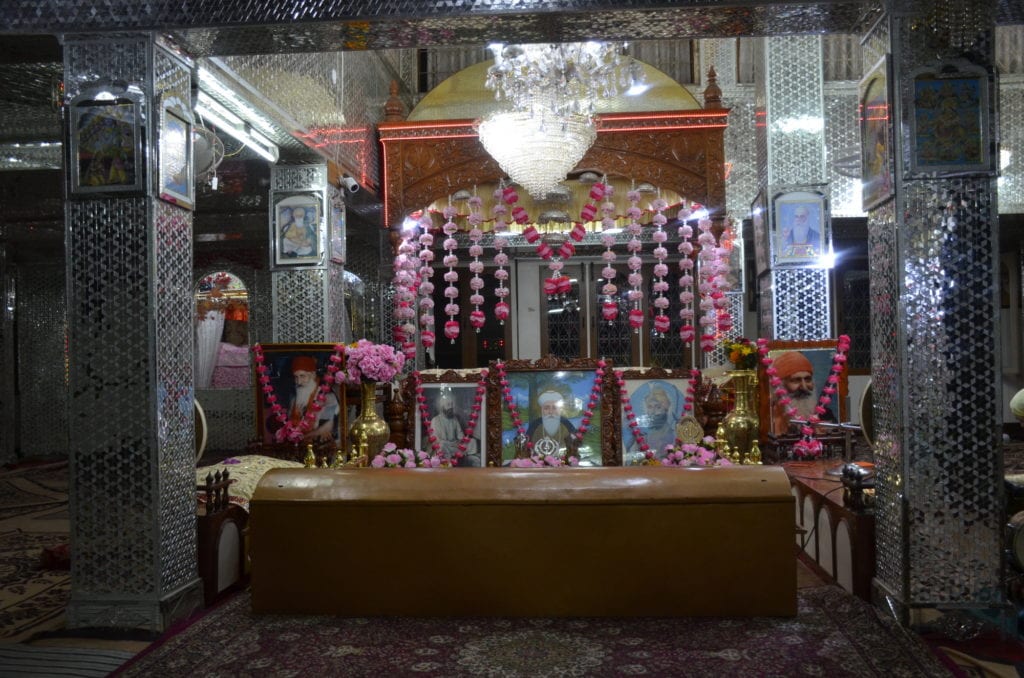
Variety of Manikiran

Hanumanji at hilltop, Shimla
I go to the Jakhoo temple every time I visit Shimla. February 2019 was no exception. I had reached Shimla in the evening and it had soon started to snow. It was a gentle drift which became heavier in the night. I set out very early the next morning to the temple, maybe at 5.30 or 6 a.m. The snowfall had covered the town through the night. The landscape was completely white. The town was still asleep, perhaps saying “Life would anyway be slow, so why rush the morning?” With all the silence, the walk through the soft and sinking snow felt even quieter.
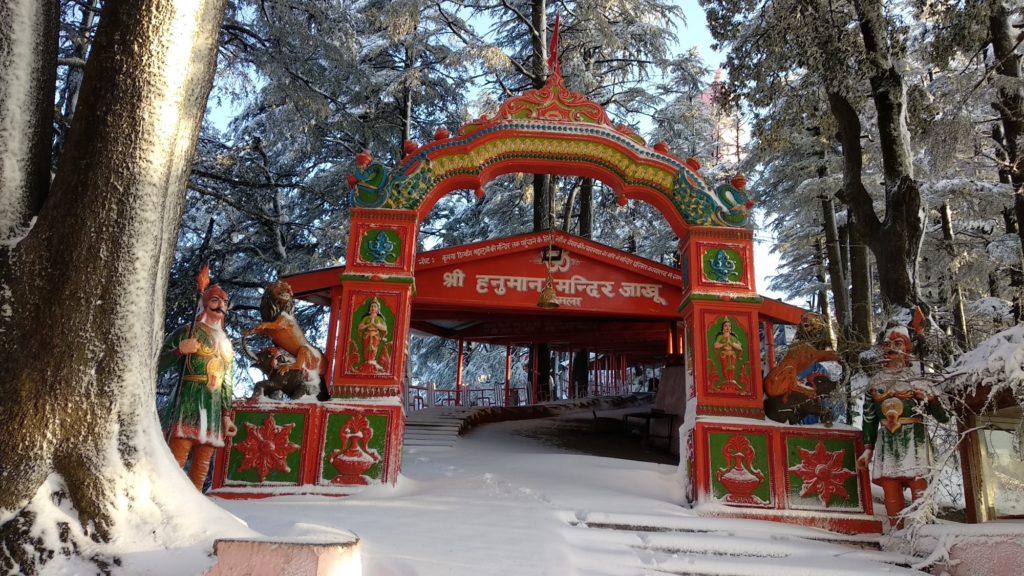
Last flight of steps before Jakhoo temple in Shimla
There was a bit of mystery ahead. In normal weather, the steep climb to Jakhoo takes just over thirty minutes. It snows heavier near Jakhoo and I was not sure if the route was even open. With legs sinking in calf deep snow, I was making only slow progress, but cheerful progress. The route was open but there were no other footmarks on the snow. The snowfall had been heavier near Jakhoo and my feet sank almost knee deep. When I reached Jakhoo I was the only devotee.
In warmer times, the climb itself is an experience. A small board just behind the public library at the ridge challenges you right at the start. It tells you how long you ought to take (age and fitness adjusted!). It is a steep climb for a third of the way winding past a café run by prisoners, some hotels, shops, a Church in disuse and some colonial bungalows. It levels out for the next one third of the way along a large playground and a row of houses. The last one-third is a steep climb on steps. This part is thickly wooded and full of aggressive monkeys. There is a somewhat inconvenient and slightly expensive rope-way. There is also a long winded road that takes you through all of Shimla’s traffic. You can avoid the climb with either of these, but you should climb for the experience and the memories.
The temple is at the top of the ridge and is the highest point in Shimla. It marks the place where Hanumanji heard Sage Yakoo’s chanting and stopped, before resuming his search for Sanjeevini. The temple complex has a 108 feet tall Hanumanji who looks down at the mall road and Shimla ridge below. The sunrise and the sunset are fabulous at Jakhoo. The slanting rays break through the tree leaves to light up the saffron coloured temple walls from different angles. The shadow of the trees adds to the effect. The evening aarti is great community experience.
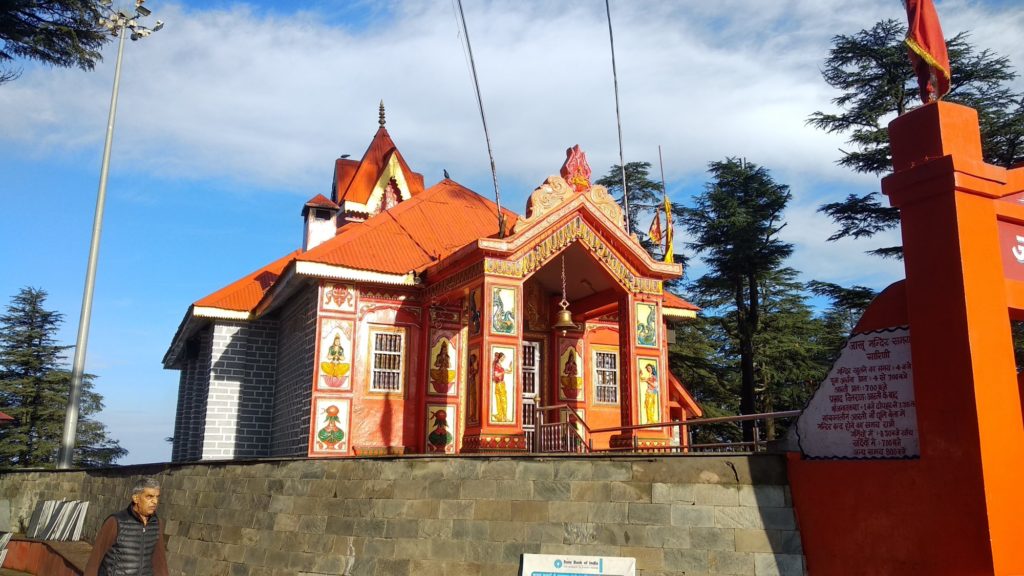
Sunrise at Jakhoo temple

Jakhoo at Sunset
The Panditji is of a ripe age and perhaps lives at the ridge itself and must have served Hanumanji for several decades. He serves the devotees tirtha, some prasad, a flower or two and then caringly applies the tika. He picks up every rupee offered to him and puts them in the hundi. Even if it was intended for him, he takes nothing of it for himself.
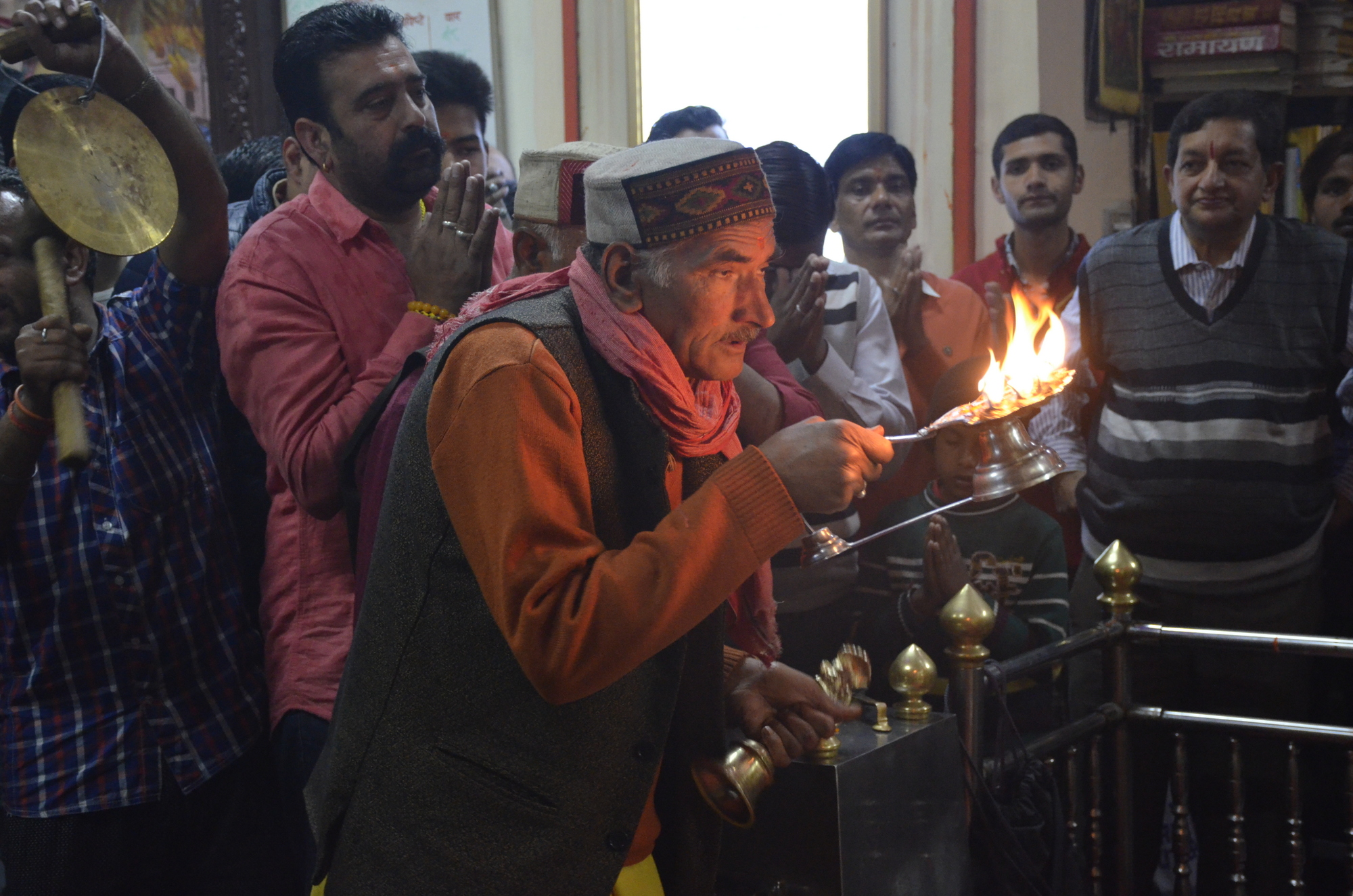
Evening Aarti
I had taken my drone along that morning. With freezing and numb fingers I managed to fly the drone for a few minutes. The drone’s eye view of Hanumanji standing amidst the blanket of snow was incredible. But the temperature took its toll. My thin gloves could not stop the cold that quickly turned into searing pain. I rushed down hoping for warmth. Luckily, ten minutes down, where the trail levels a bit to meet settlements, a tea stall was stirring to life. The owner looked at me and lit up a fire. Then brought me a cup of tea. Life came back. I have gone back twice since then for a warmer experience.
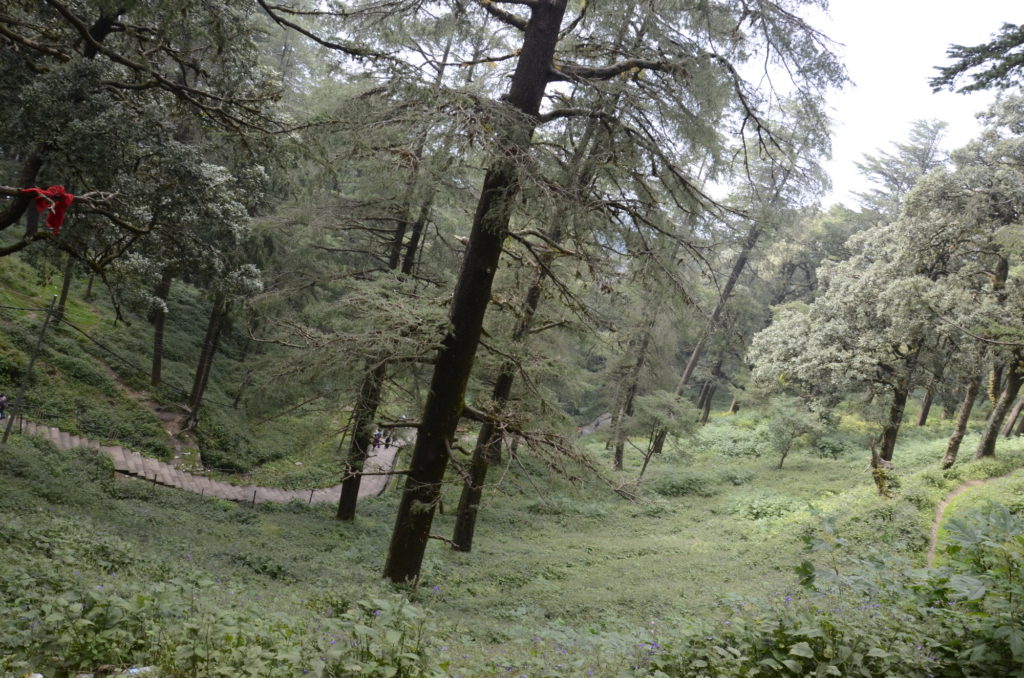
The climb to Jakhoo
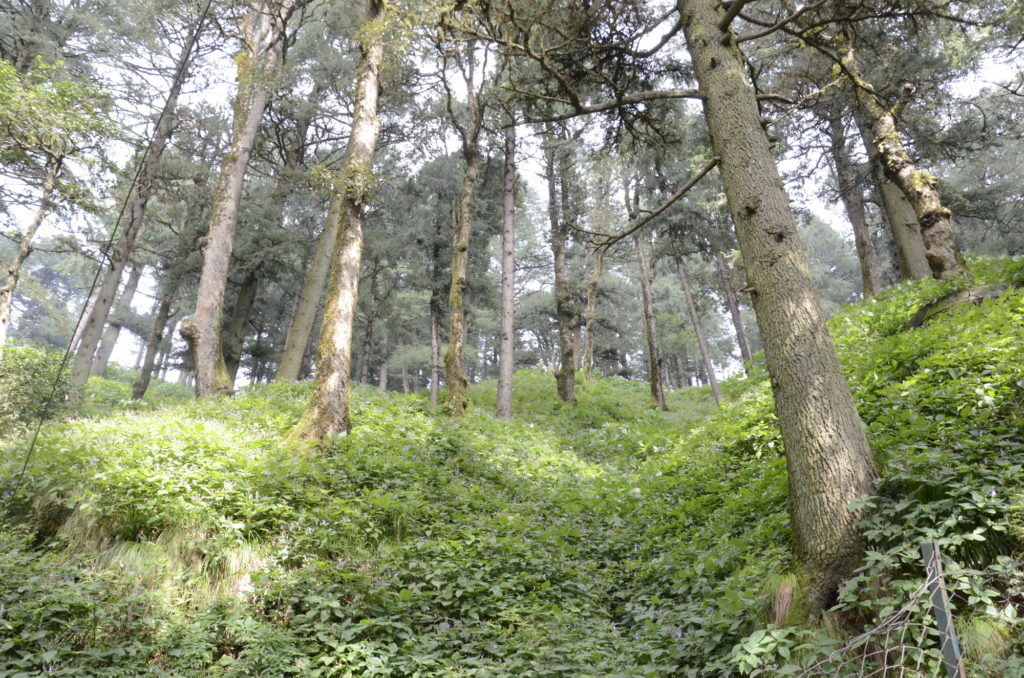
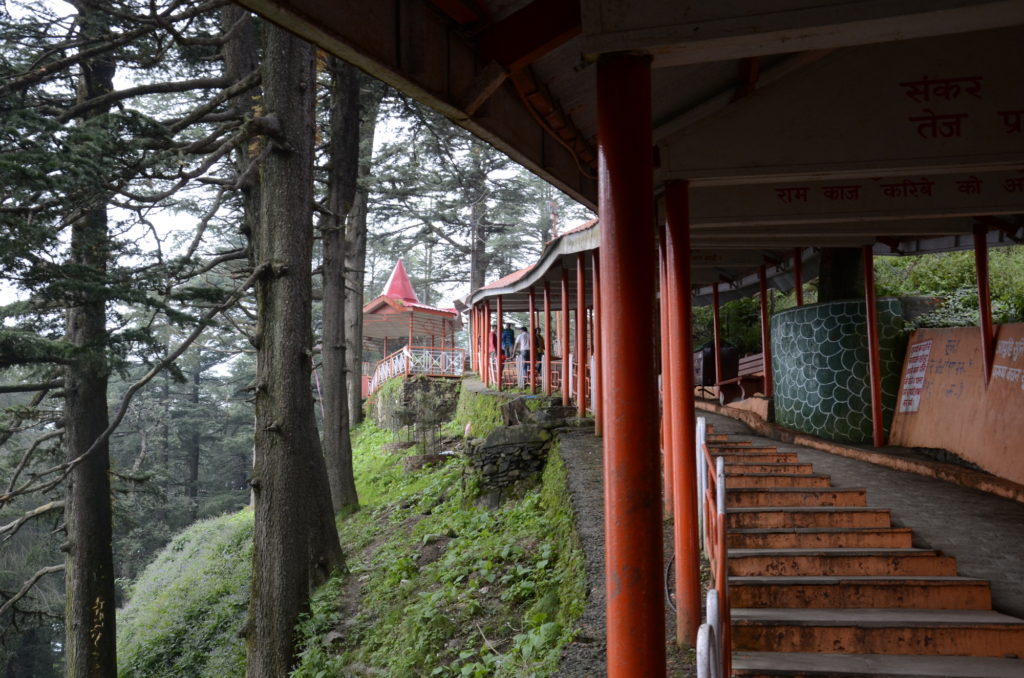
This last climb is a monkey kingdom

The pleasure of doing nothing at Ki
Ki Monastery. Temples of Himchal …13.
Ki Monastery forms the grand trio of Spiti monasteries with Dhankar and Tabo. Ki is a 1000 year old. It appeared much larger than the other monasteries, in size as well as the number of monks. It looks like a building pinched out of worn out rock and mud face. White and dark brown stick out of the mountain face and it takes the form of the rock face and is constructed over several levels sliding down.
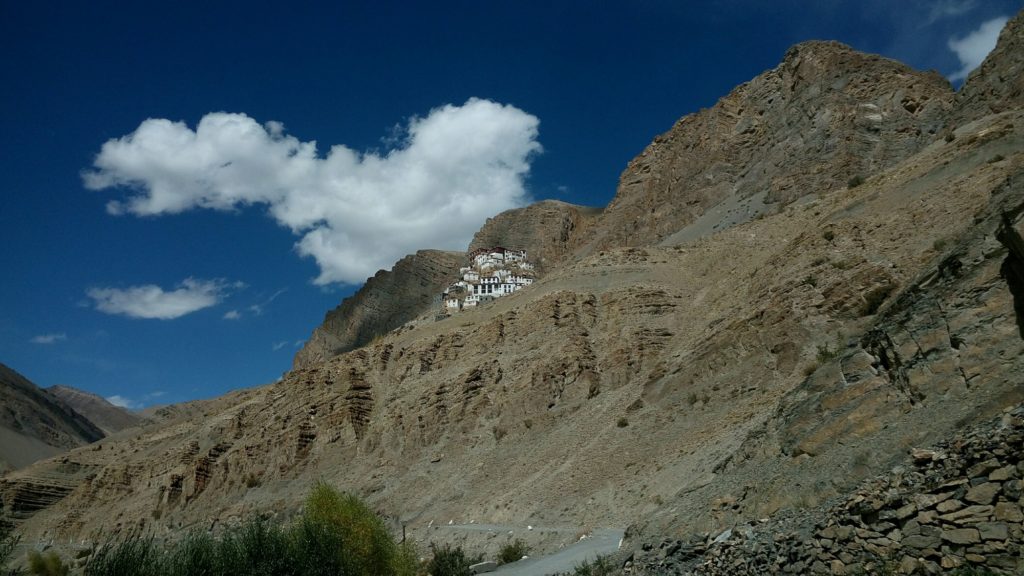
Capping the mud, Ki Monastery
I kept going back to this place over two days for some reason or other. There was a Thai national negotiating a monastery stay (was allowed only three days), an Indian, killing time waiting for the single bus in the evening that would take her to the next destination, monks chatting. Then a monk opened a special room for me whose significance I have forgotten. I gazed at the monastery from the north, from the south. I went across the Spiti river to take a look at it from far. Heart’s content.
I watched several rounds of monk volleyball; a round of chanting; lunch serving. I was roaming around Spiti in a scooty which wasn’t a common thing then in Spiti. They borrowed it and went round and round a small square with absolute glee. I dont remember a single fact about the monastery, but each hour of idle at the monastery is kin of etched in mind.
The pleasure of doing nothing at Ki Monastery
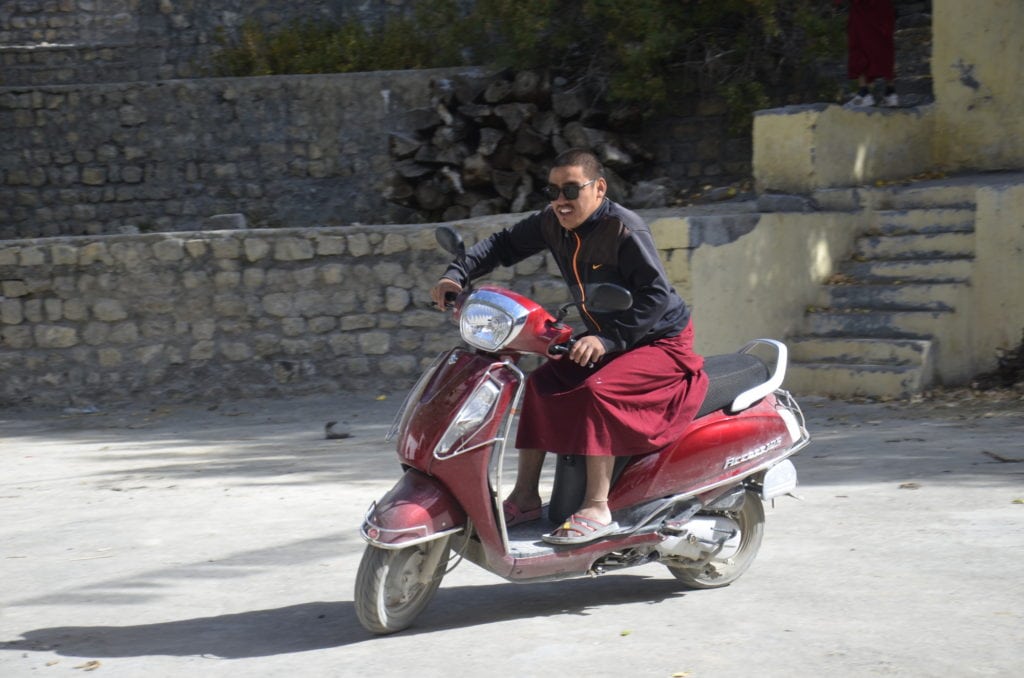
There is peace in Buddhism. For every other emotion, there is a scooty
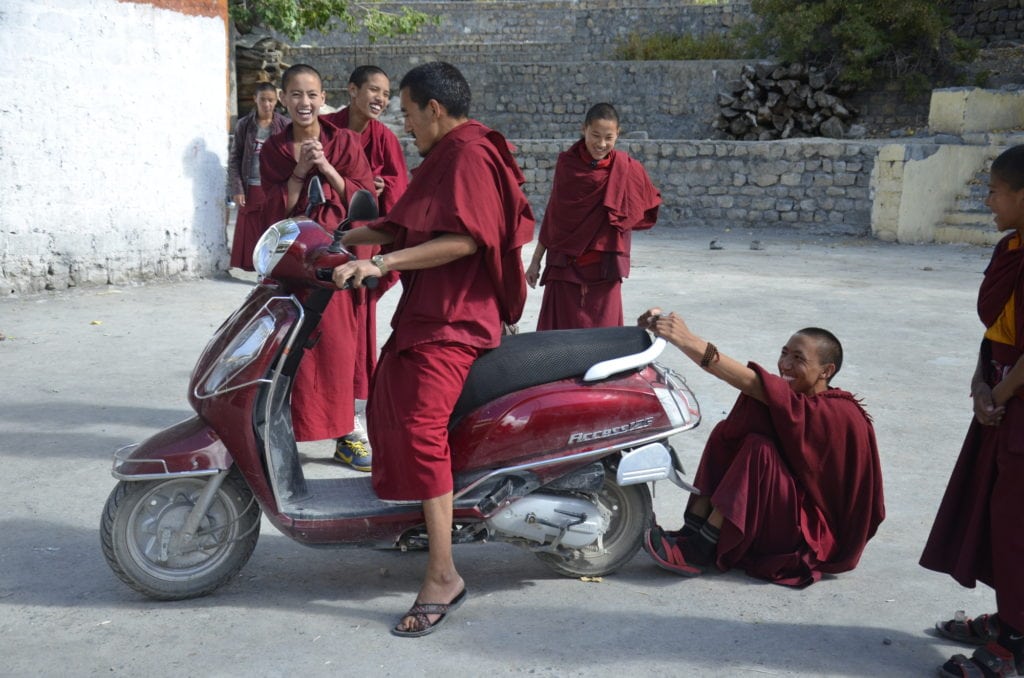
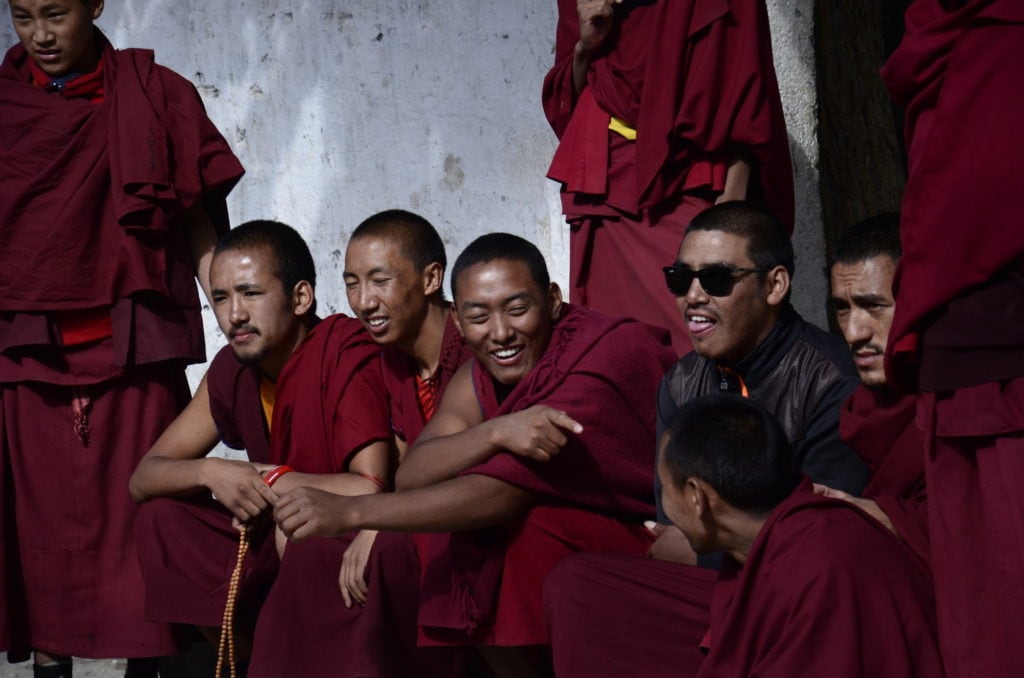
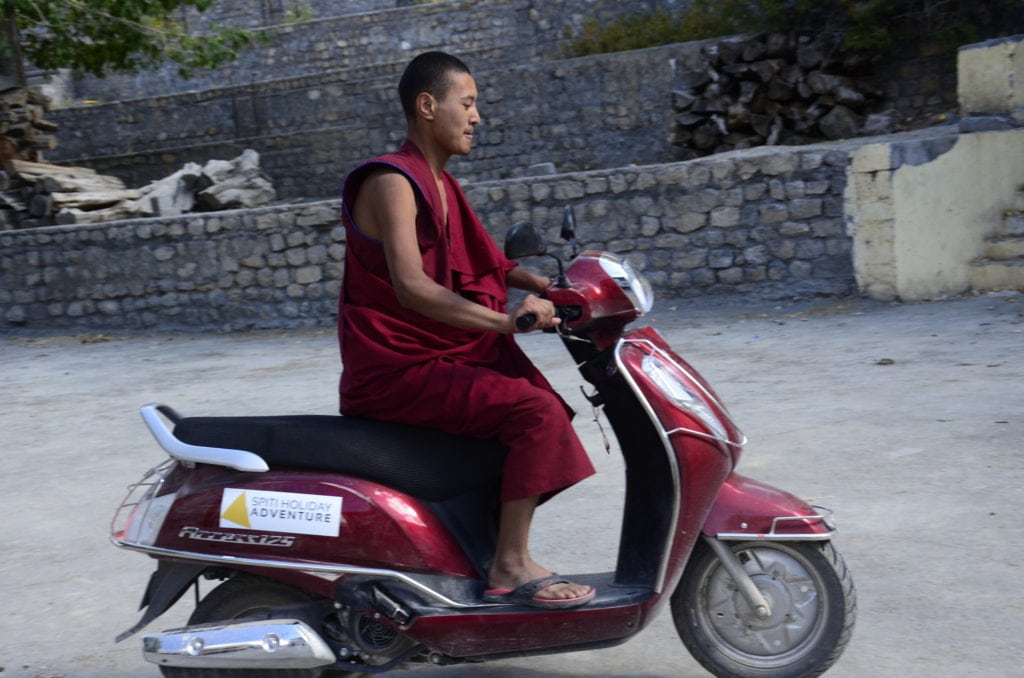
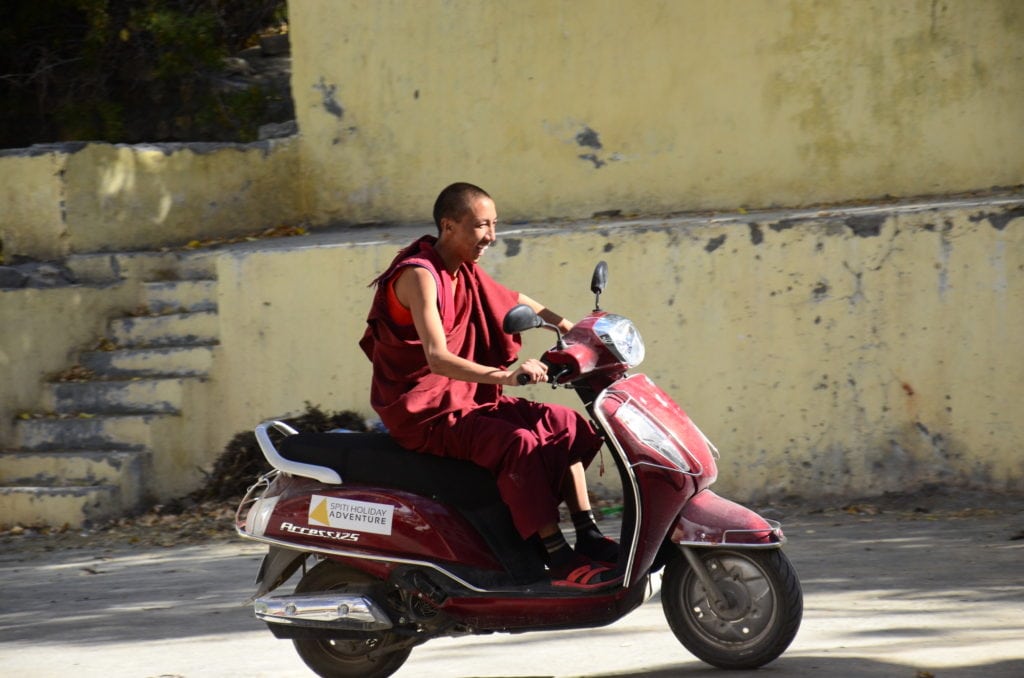
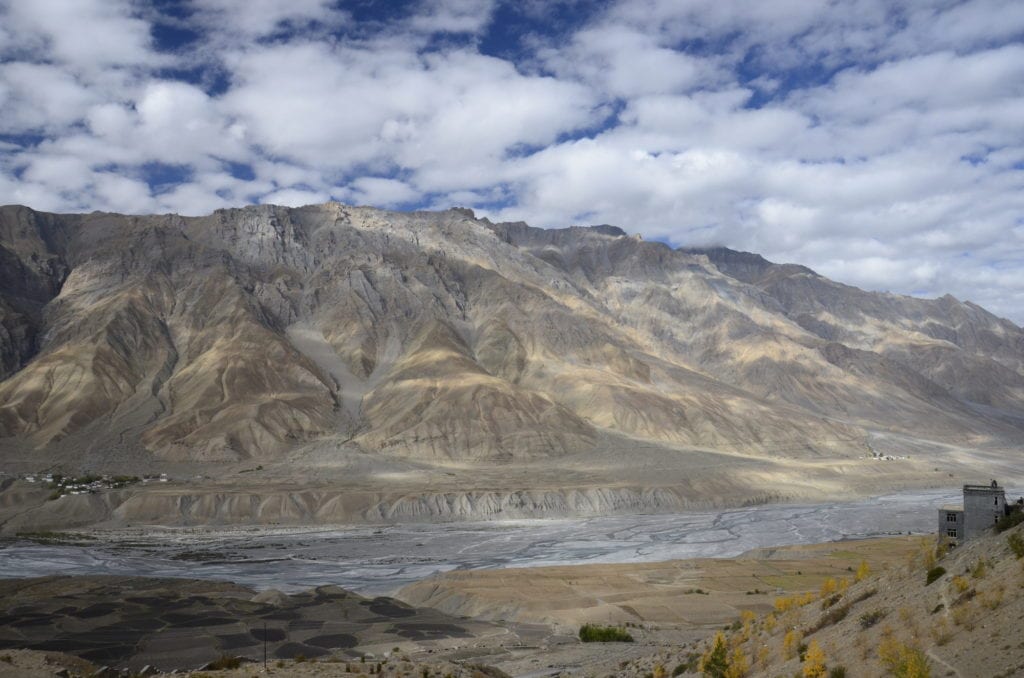
Across Ki and across Spiti river

Perfect Cone
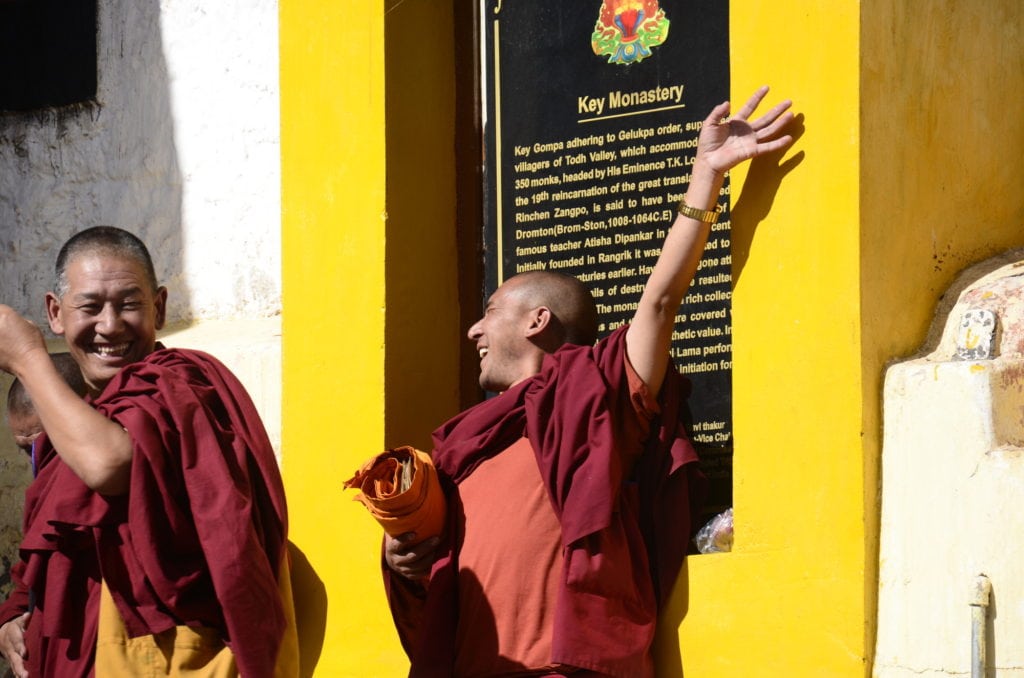
Buddhist brotherhood
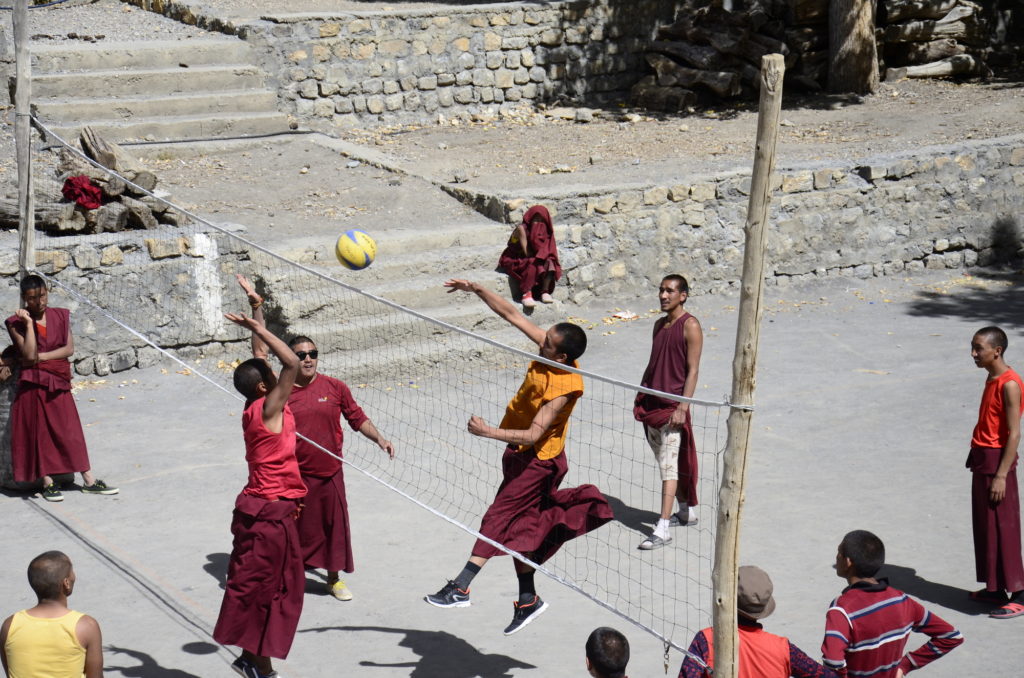
The punch of Buddhism
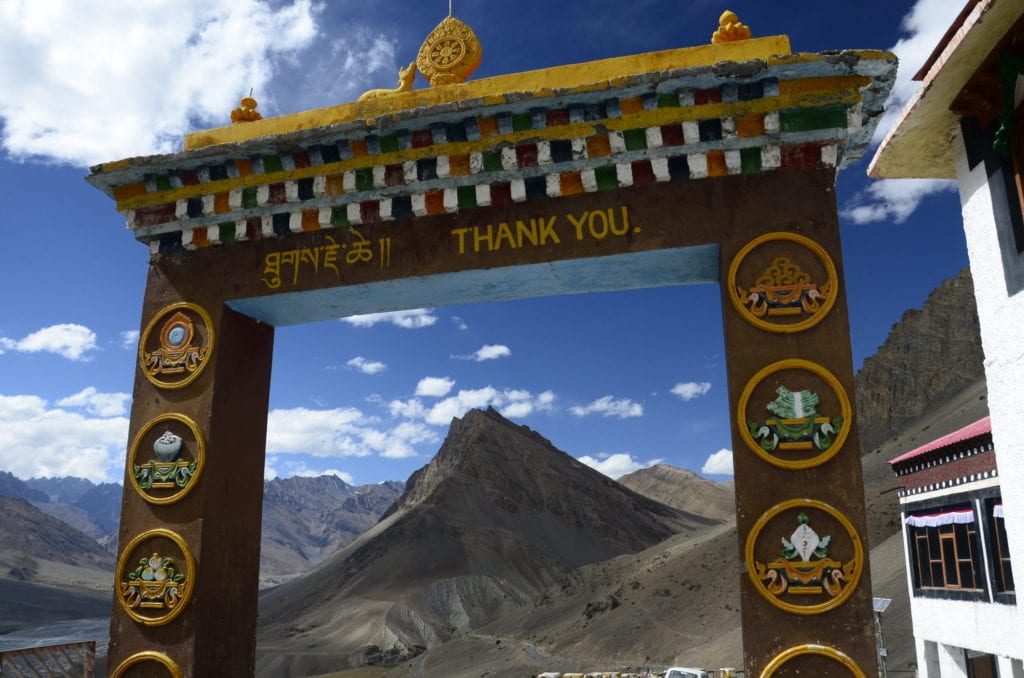
Thank you, for all that Spiti offers

Philosophy at a glance, Kardang
Kardang Monastery. Temples of Himachal … 4.
Kardang is one of the many monasteries in Keylong. Probably one of the oldest, the building has been rebuilt maybe several times. It looks quite modern despite being 900 years old.
It is across the Bagha river that flows fast, thin and deep. The walk requires either a steep trek down and up, crossing the river (or) a long winded drive which crosses the river further ahead at Tundi with a gentle, but long drop and climb.
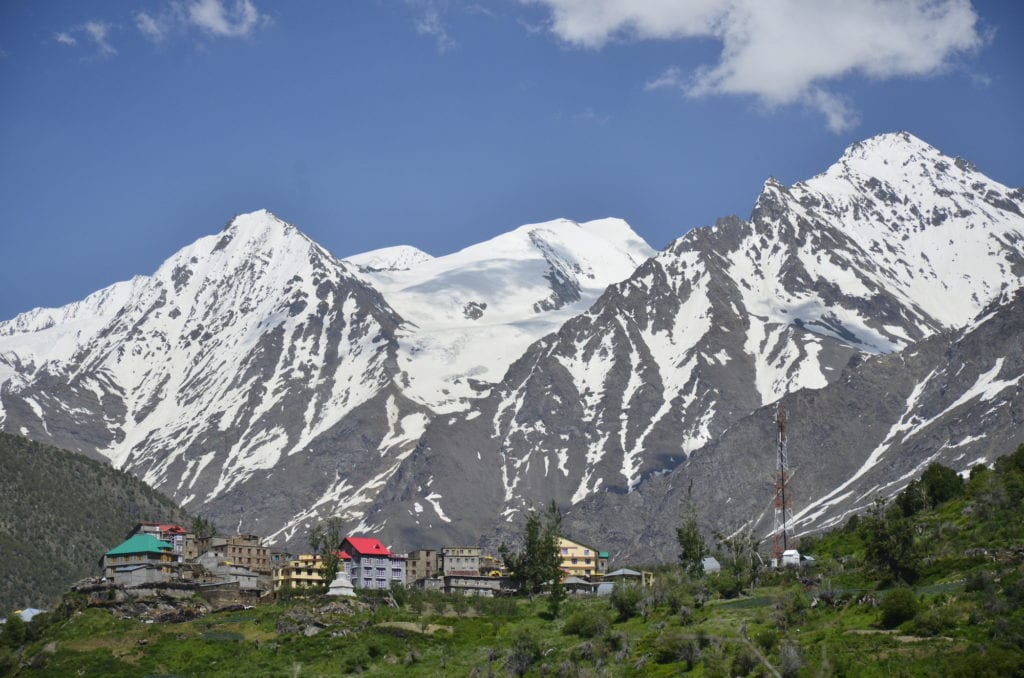
The views across Keylong
Armed with a scooty, I chose the drive and by evening, reached the monastery. The monastery has several things to see, including the rock carvings that I unfortunately missed. However, the most striking part of the monastery is outside of it. A sitting Buddha, maybe three or four feet tall, made of sandstone that you could mistake to be from Orissa. The Buddha is seated on a pedestal that is chest high, with a small pot of plants next to him. He overlooks the snowy peaks of the north, Ladakh and beyond.
To gaze along Buddha’s line of vision is to live the entire Buddhist philosophy in a single moment. There is absolute nothingness in terms of civilization. The view jumps over all of Keylong, the grassy slopes above it, and the treeless rock faces further above. You see Buddha and then the sharp snow clad mountains at the distance, in one frame.
Few places summarise their philosophy in just the setting. Kardang is one such.
Kardang, across Keylong, Lahual, Himachal.
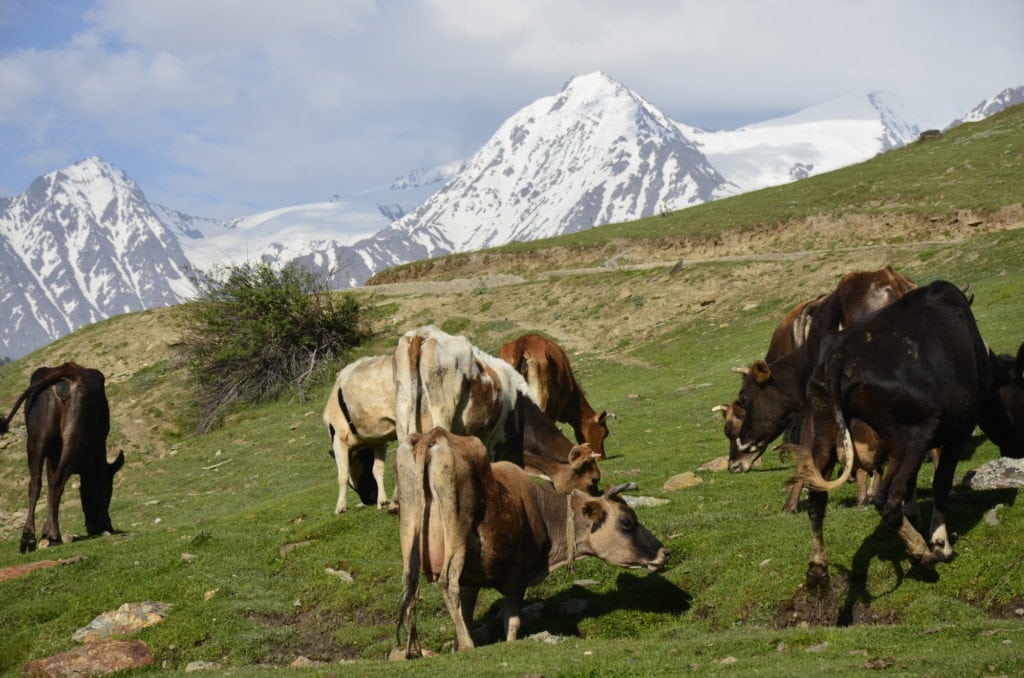
Grazing pastures near Kardang monastery
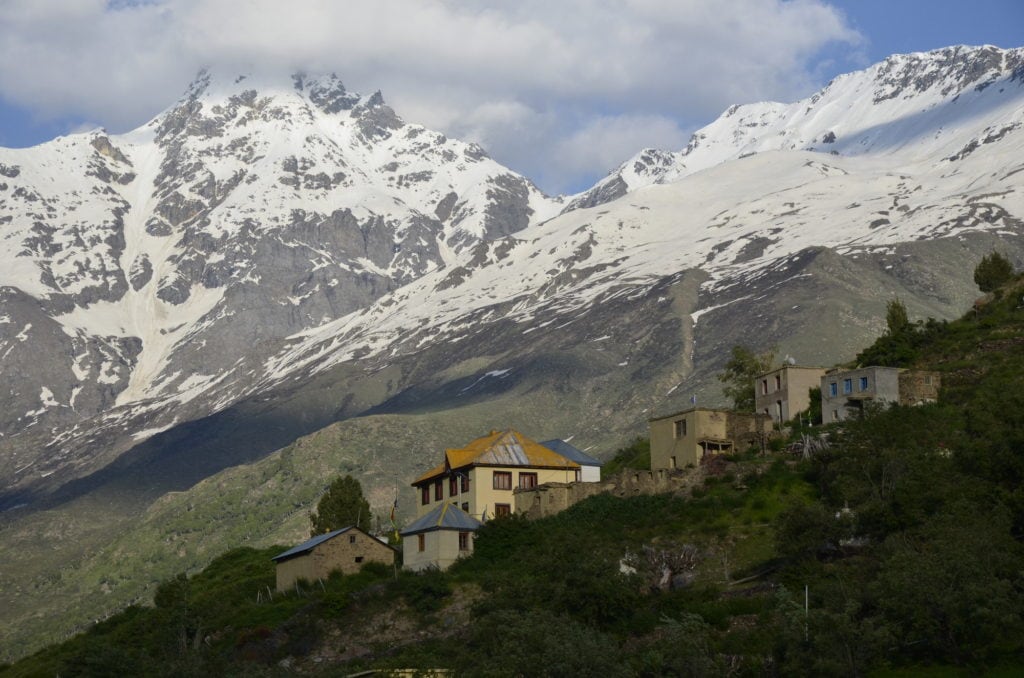
Views behind the Kardang Monastery
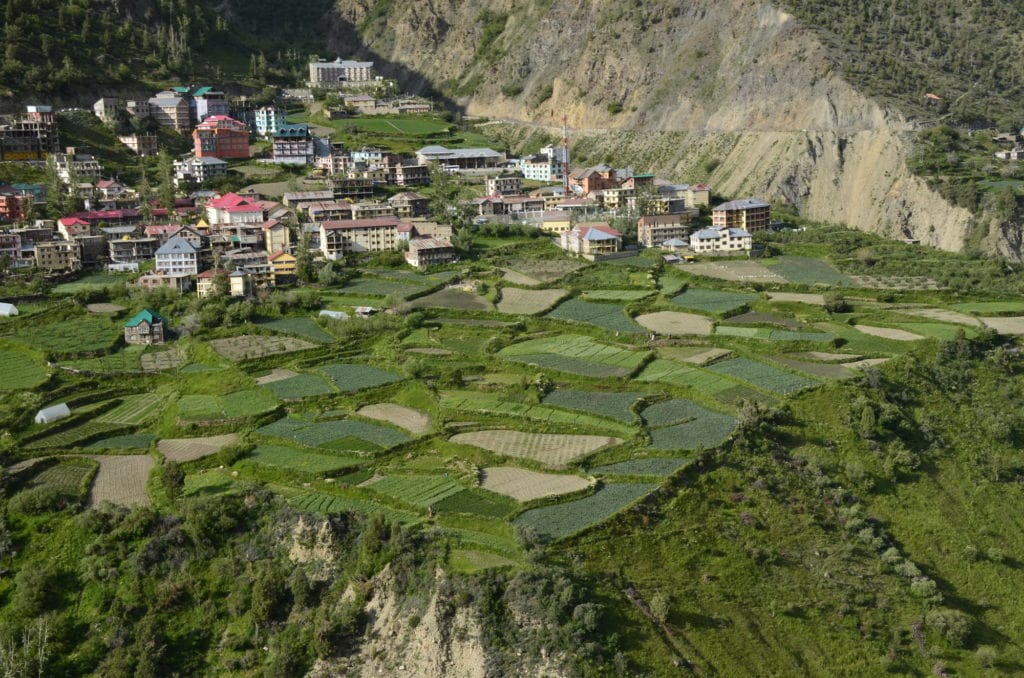
Keylond and its fields, from Kardang Monastery
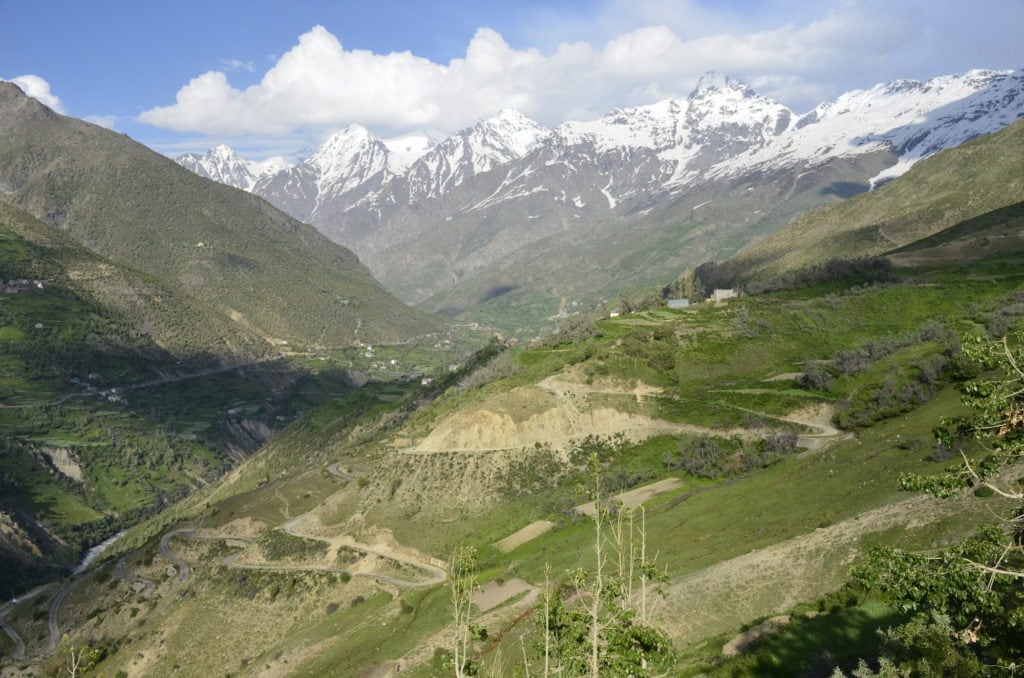
The Bagha valley at Keylong

